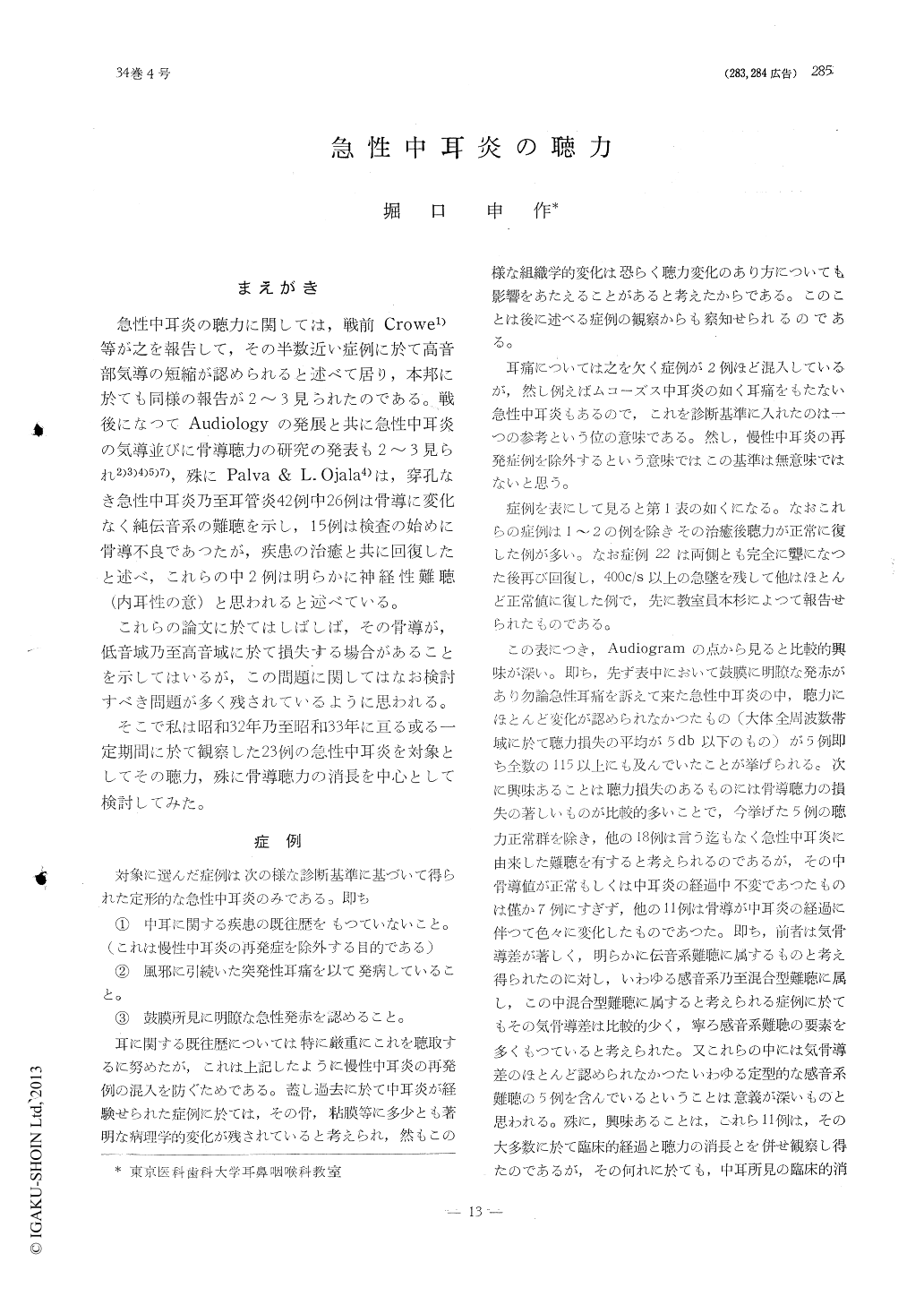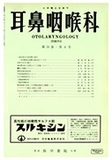- 有料閲覧
- 文献概要
- 1ページ目
まえがき
急性中耳炎の聴力に関しては,戦前Crowe1)等が之を報告して,その半数近い症例に於て高音部気導の短縮が認められると述べて居り,本邦に於ても同様の報告が2〜3見られたのである。戦後になつてAudiologyの発展と共に急性中耳炎の気導並びに骨導聴力の研究の発表も2〜3見られ2)3)4)5)7),殊にPalva & L. Ojala4)は,穿孔なき急性中耳炎乃至耳管炎42例中26例は骨導に変化なく純伝音系の難聴を示し,15例は検査の始めに骨導不良であつたが,疾患の治癒と共に回復したと述べ,これらの中2例は明らかに神経性難聴(内耳性の意)と思われると述べている。
これらの論文に於てはしばしば,その骨導が,低音域乃至高音域に於て損失する場合があることを示してはいるが,この問題に関してはなお検討すべき問題が多く残されているように思われる。
To study bone conduction in acute otitis media observations were made on audiograms that were taken on 23 cases of acute otitis media. After having been cured of the acute affection all of these cases showed no difference in hearing as compared to that before the illness. The findings were as follows:
(1) In 5 cases no change in hearings (air and bone conductions) was noted in spite of the inflammatory involvement of the eardrum among them.
(2) Conductive deafness perse was met with only in 7 cases and which might be considered as relatively rare in occurrence.
(3) However, in 11 cases almost the half of the total number a remarkable bone-conduction loss that may be considered as a condition typifying the state of nerve deafness was found.
The author concluded that acute inflammatory changes, that involve the middle ear may therefore, readily invade the inner ear.

Copyright © 1962, Igaku-Shoin Ltd. All rights reserved.


